What It’s Like to Drive a Tuk Tuk in Sri Lanka
Driving a tuk tuk across Sri Lanka is a unique mix of chaos, beauty, and freedom. You’ll share the road with buses, cows, monkeys—and occasionally elephants or horses. It may sound wild, but stay alert and drive slow, and you’ll be just fine.
You also won’t need to worry about which bus to take, where to catch it, or constantly negotiate with tuk tuk drivers—especially in smaller towns where apps like PickMe often don’t work.
Driving a tuk tuk in Sri Lanka Takes Time
Tuk-tuks aren’t built for speed. By law, they’re limited to 40 km/h, and even short distances can feel long—especially on winding mountain roads or in busy towns. I many times drove around 50–55 km/h, but I wouldn’t recommend going faster. If you crash at higher speeds, you’re likely to get injured—there are no seatbelts, and very little protection.
I drove over 1,000 km in 17 days, spending around 25–30 hours behind the handlebars. It was doable, but some days felt like too much. A better rhythm is 2–3 hours of driving per day, which leaves plenty of energy for exploring.
No seat belts. No airbags. No rush. Stick to the speed limit and embrace the pace—it’s part of the charm.
The Joy of the Journey
Going slow means you can stop whenever you want. A glowing rice field. A smiling kid waving. A roadside fruit juice stand. When you drive a tuk tuk, the journey becomes the destination.
Locals are curious and welcoming. Expect spontaneous interactions, tips about hidden spots, and plenty of waves and smiles. I even picked up locals now and then to give them a lift — no real conversations due to the language barrier, but always a shared smile or a grateful nod.

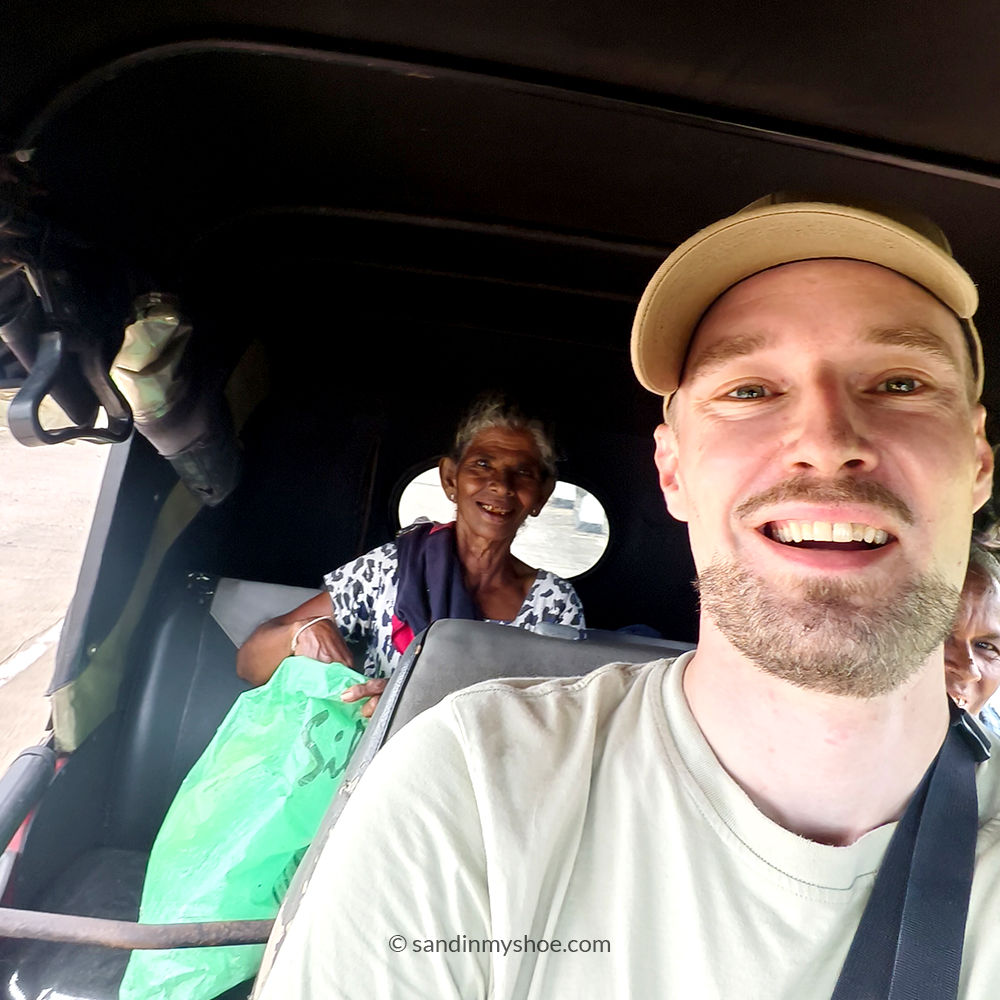
Chaos, Left-Side Driving & Road Rules
Sri Lanka drives on the left side, and the roads can be intense. Buses barrel past, animals wander freely, and the general rule seems to be: biggest vehicle wins. Avoid driving after dark—there’s a real risk of collisions with animals, especially elephants.
Just stay calm, leave space, and drive defensively. You’ll get used to it faster than you think.
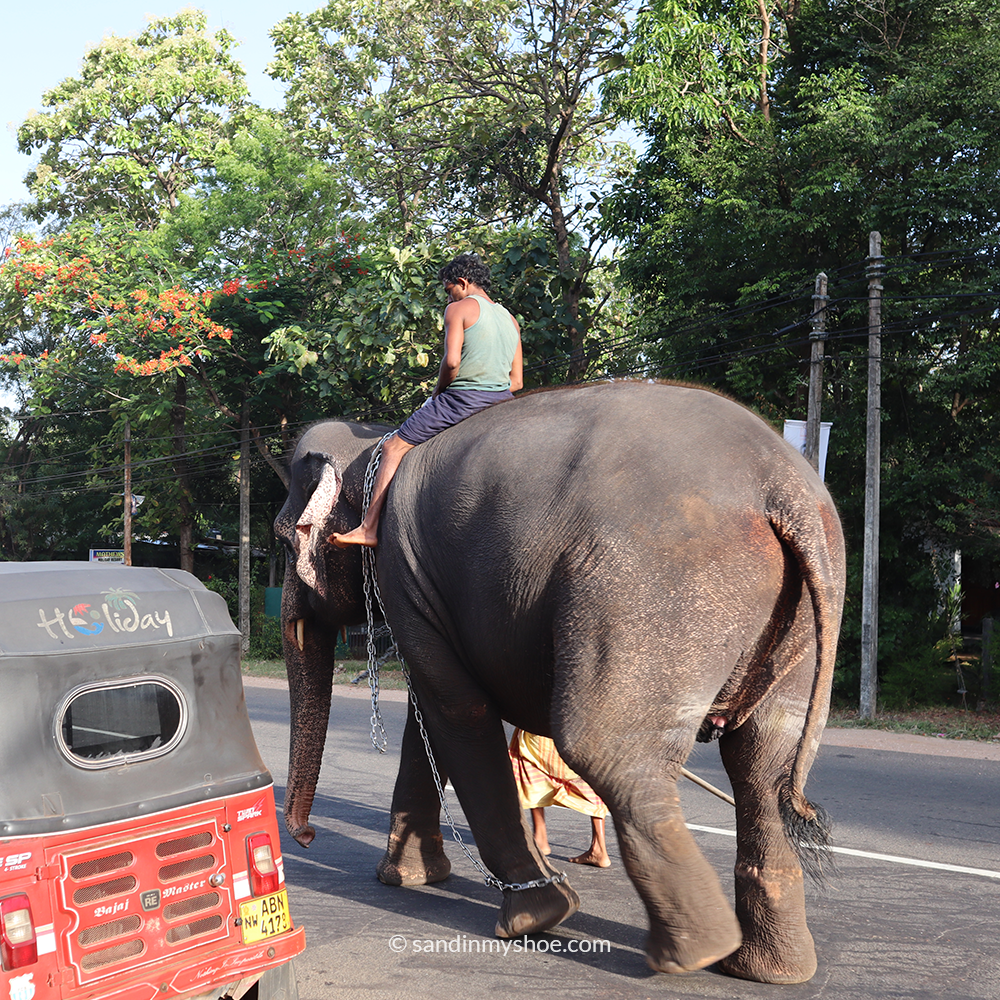

Noise, Bumps & Engine Quirks
Tuk-tuks are noisy and bumpy. The engine hums loud, and the ride can feel rough—especially on uneven or uphill roads. Don’t expect comfort; expect character.
Fuel Tank Is Tiny
Most tuk-tuks hold only about 6 liters of fuel, which takes you roughly 125–150 km. Don’t wait for the tank to hit empty, especially in remote areas. That said, even if you run out, locals will almost always help you out.
Rain Happens
Sudden downpours are common—especially in the hills and during monsoon months. Most tuk-tuks have plastic rain flaps, but they’re imperfect. Bring a light rain jacket and a warm layer for chilly mountain drives.
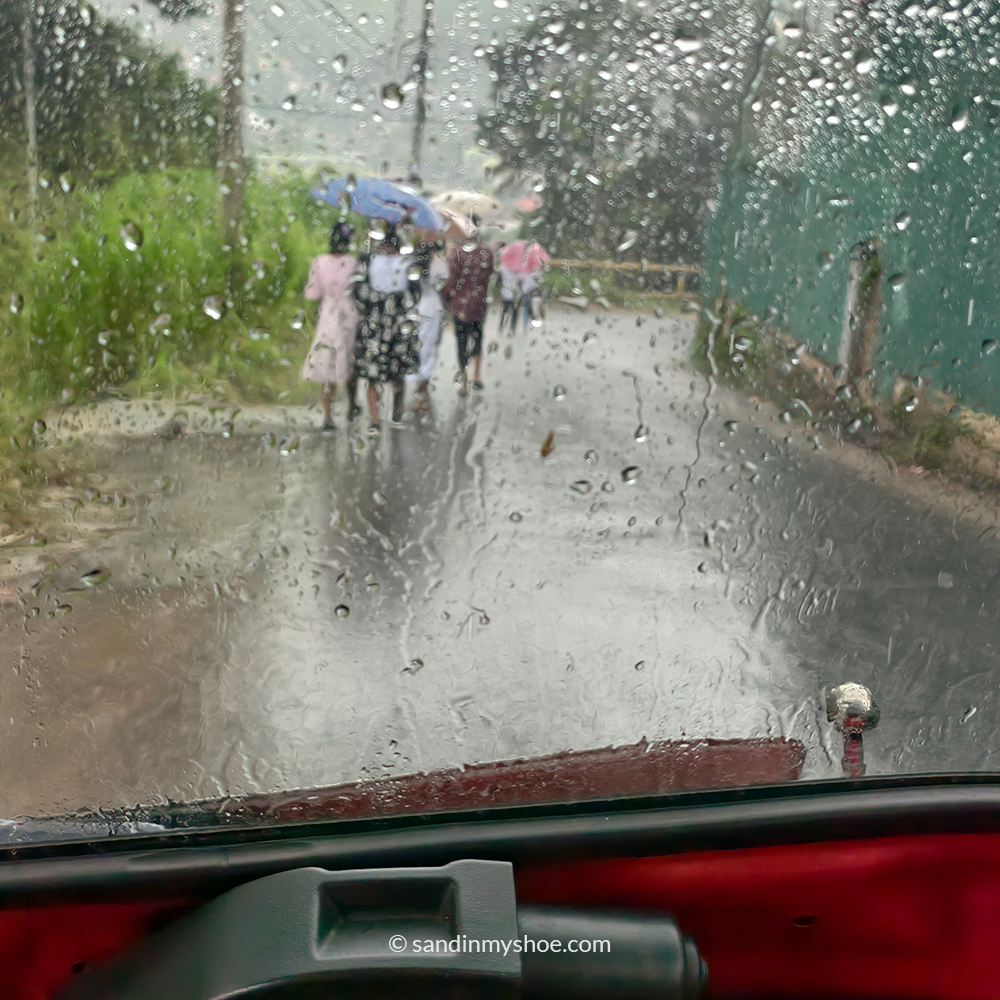
What It’s Really Like: A Glimpse from the Road
That night in the mountains was one of the most intense moments of my tuk-tuk journey.
Tuk-tuk travel in Sri Lanka is raw and full of surprises. It can get a little uncomfortable, but absolutely worth the while.
Planning Your Sri Lanka Tuk-tuk Adventure
Timing is everything when planning a Sri Lankan Tuk-tuk adventure. The weather across Sri Lanka shifts dramatically depending on the region, so your ideal tuk-tuk route depends on when you go — and your interests; whether you want to surf, explore culture, or just enjoy the beach with some partying. And if you’re wondering how long to stay, read my post about how many days in Sri Lanka. Whatever your plan is, renting a tuk-tuk from a proper tuk‑tuk rental place with good reviews might save you plenty of trouble.
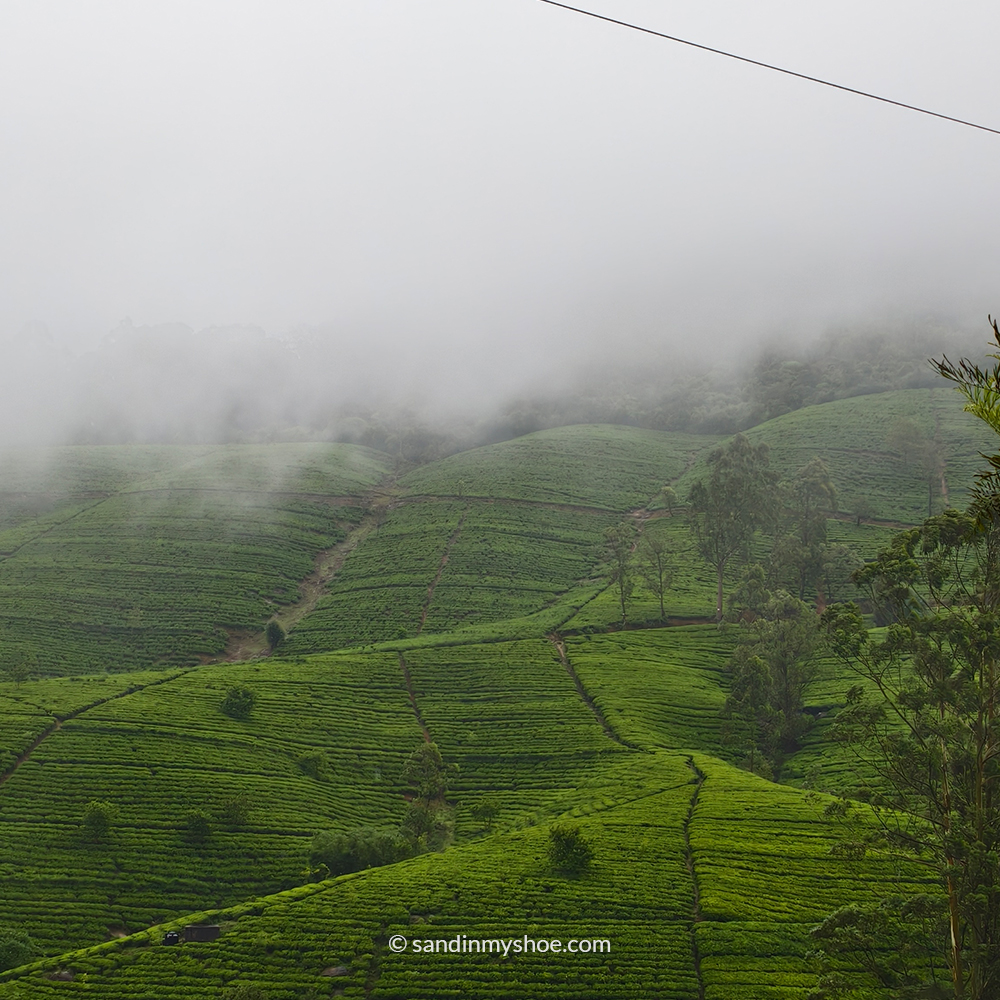
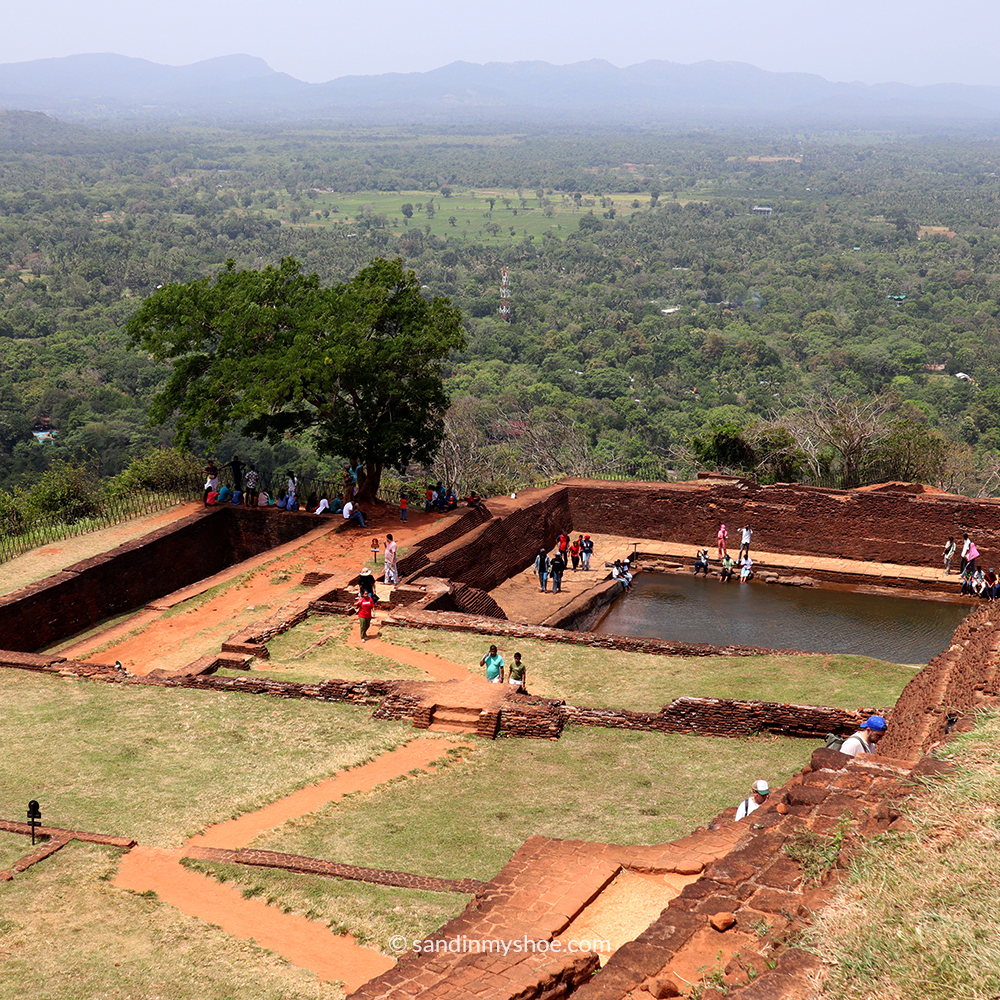
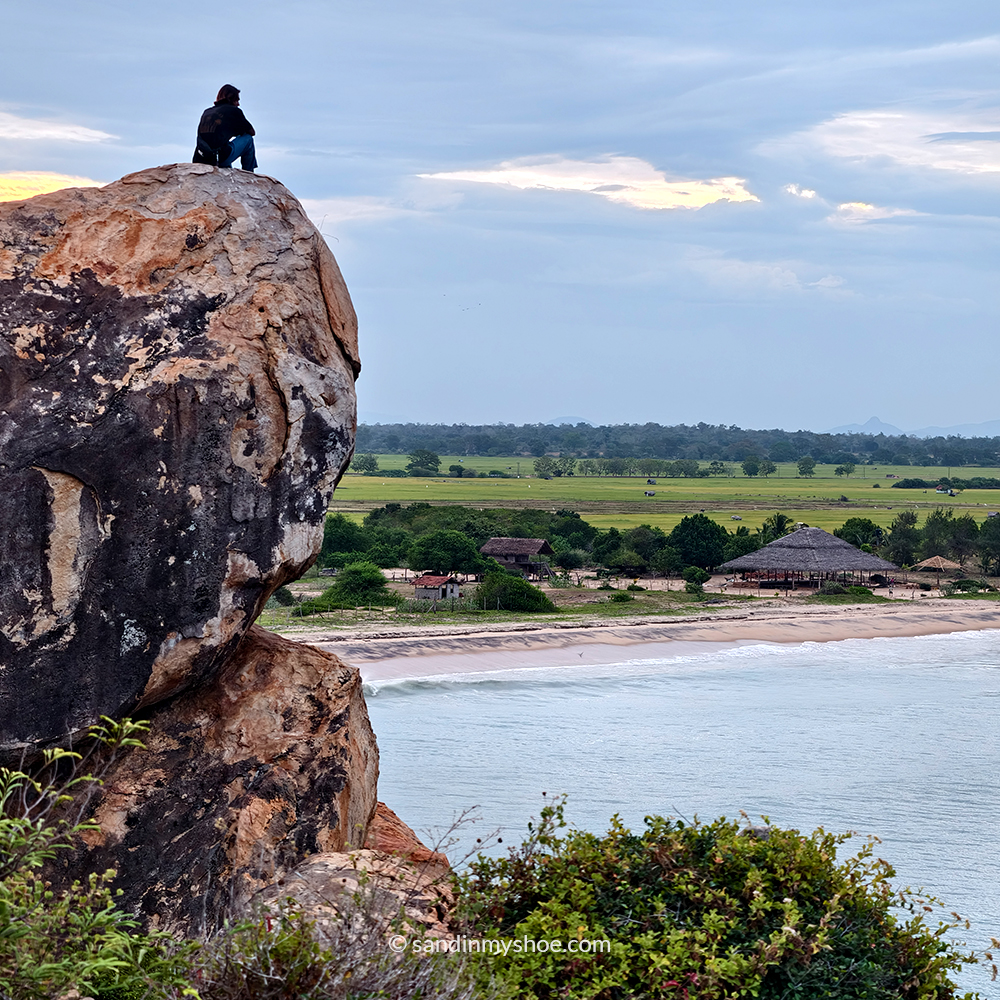
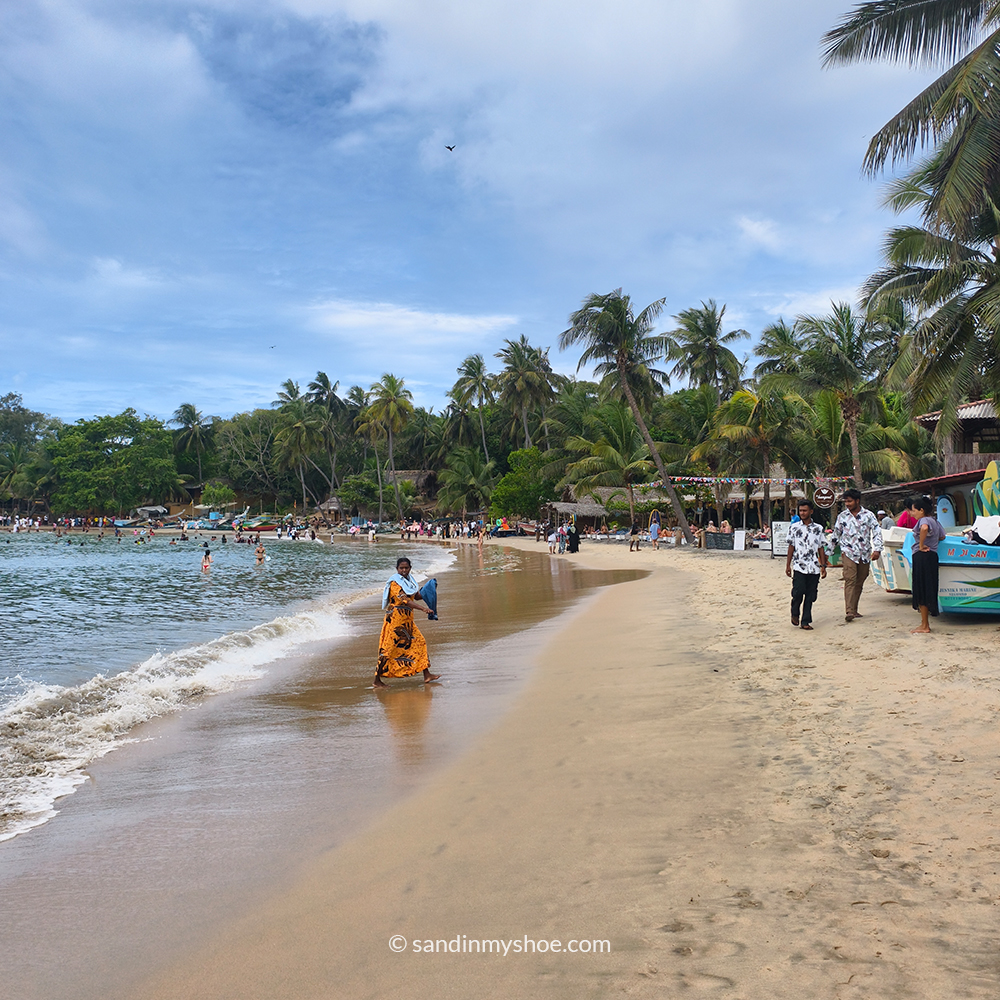
Best Time To Visit Sri Lanka by Tuk-tuk
Sri Lanka’s weather is shaped by two monsoons, so when one side is rainy the other is sunny. The South and West coasts together with the Central Highlands — Kandy, Nuwara Eliya, Ella, and Sigiriya — are best from December to March, while the East and North coasts shine from May to September, with peak surf in May and June.
The Central Highlands follow the Southwest monsoon, staying cool and misty with their clearest skies in winter. The Central Lowlands — Anuradhapura, Polonnaruwa, and Dambulla — follow the Northeast monsoon, hot and dry in summer but wetter between November and February.
East
How to Rent a Tuk Tuk in Sri Lanka
Renting a tuk-tuk for your Sri Lanka adventure can be a fantastic way to explore the island — but it comes with a few things to consider. From where to rent, to checking the condition, to understanding the paperwork, here’s what you should know before hitting the road.
Where to Rent
It can be tricky to know where to start, and prices vary a lot depending on the location. I recommend renting from Negombo — a smaller, less chaotic city about 30 km north of Colombo. It’s close to the airport and has plenty of reputable rental options, making it a much calmer and safer place to begin your Sri Lanka tuk-tuk adventure. In order to get the best price, you will need to negotiate on site and it can take some time.
I recommend setting aside a full day to visit different tuk-tuk rental shops. Before you arrive, look online for places with good reviews. Then start early, visit a few shops, talk to the owners, and share your travel plans and budget (don’t forget to negotiate hard!). Try to close the deal the same day so you’re ready to hit the road the next morning.
You can also book online and skip the hassle — but expect to be pay nearly twice as much.
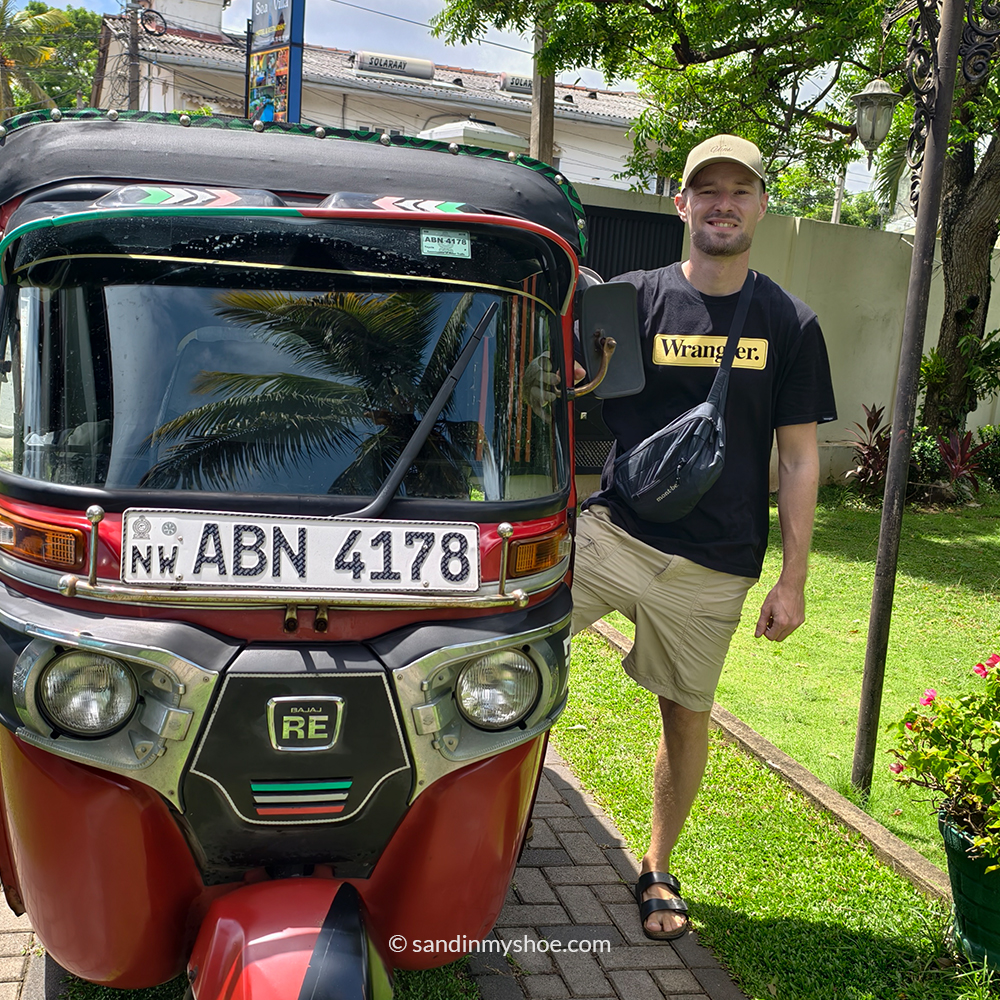
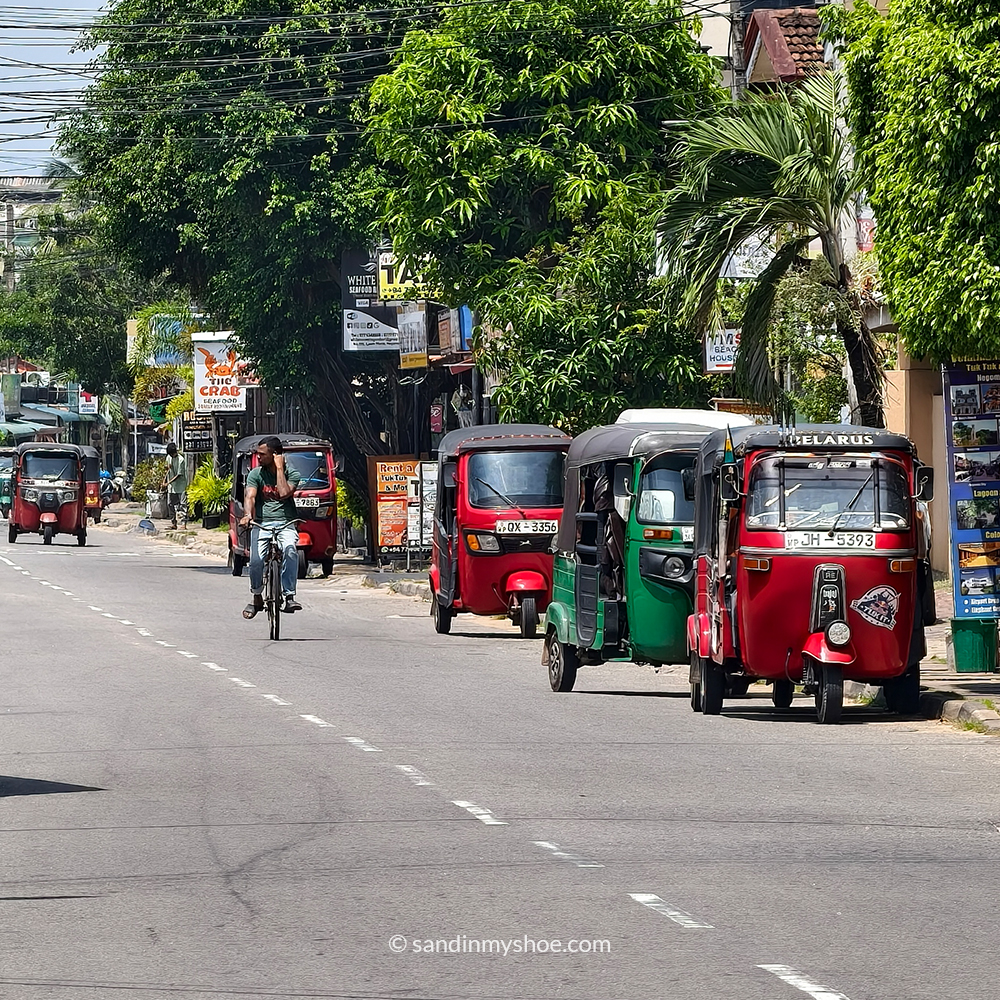
First-Timers
Most foreigners renting tuk-tuks are doing it for the first time — and that’s totally okay. If you’ve ridden a moped or scooter before, the feel is similar, though the tuk-tuk is larger and more stable. You’re seated more comfortably, but it’s easy to forget how wide the vehicle is — especially in tight spaces.
I learned that the hard way and scraped one side early on. So take your time, especially at first.
Choosing a Rental Company
Only rent from companies with solid reviews. If a tuk-tuk feels off during the test drive, trust your instincts — walk away and find another.
Not all rentals are in great shape, most of them aren’t. Some tuk-tuks have quirks or hidden mechanical issues, and most rentals don’t include insurance for accidental damage. So:
- Read the rental agreement carefully.
- Ask about damage fees in advance.
- Clarify what happens if the tuk-tuk breaks down.
- Make sure unlimited kilometers are included if you plan to travel far.
- Negotiate the daily rental price and the deposit. Sometimes, they might ask for a very large deposit and later accuse you for causing damages in order to keep the money.
⚠️ Avoid rentals with no online presence — they’re either brand new (and untested) or have deleted their profiles after bad reviews.
Luggage & Space
Tuk-tuks have limited storage. With luggage, they comfortably seat two people. You can fit a third person if you use a roof rack, but keep in mind it raises the center of gravity and affects stability.
So: pack light, travel easier. If you are two people you can easily have two big bags, as in 65 liters or big suitcases, however if you are three people then it might get cramped and you’ll need to store some luggage on the roof rack.
Licenses & Permits
The international driving permit (IDP) isn’t officially recognized on its own in Sri Lanka, so you will need to get a local tuk-tuk driving permit. The local permit is issued by the Automobile Association of Ceylon, and the process can take up to half a day due to queues, traffic, and limited hours. Most rental companies will assist you with this paperwork — just check with them in advance.
The guy I rented my tuk-tuk from gave me some unusual advice: “Never make eye contact with the police while driving. Only stop if they actually chase you—otherwise, just keep driving and hope for the best.”. Apparently, this is because there’s a risk of encountering minor corruption, especially during random stops.
What Are the Costs?
Many travelers go with the biggest tuk-tuk rental companies—but those usually come with higher prices. I chose a smaller, lesser-known rental based on Google reviews and found one that felt trustworthy enough.
I paid $10 USD per day, which included insurance covering engine and mechanical issues, plus unlimited kilometers. Online, you’ll often see prices around $20 USD per day, especially from the larger operators.
One of the key reasons that the tuk-tuk rentals are relatively pricey is Sri Lanka’s import tax on vehicles, which can be as high as 200–300%. Sometimes up to 600% if it’s a luxury vehicle.
As for fuel:
- 1 liter of petrol costs about $1 USD
- You can drive roughly 100 km on 4 liters
For my trip—17 days and 1,000 km—I spent:
- $170 USD on the rental
- $40 USD on fuel
= Total: $210 USD
Best Sri Lanka Tuk Tuk Routes by Season
Negombo is the ideal place to begin your tuk-tuk adventure in Sri Lanka. Located just 30 minutes from Bandaranaike International Airport, it’s far more manageable than bustling Colombo. The traffic is lighter, the roads are calmer, and you’ll find plenty of rental agencies that cater specifically to foreign travelers. Starting here means you can get used to the tuk-tuk at your own pace, away from chaotic city intersections. It’s also a great launchpad for routes heading north to the Cultural Triangle, east to surf towns like Arugam Bay, or south toward the beaches and highlands.
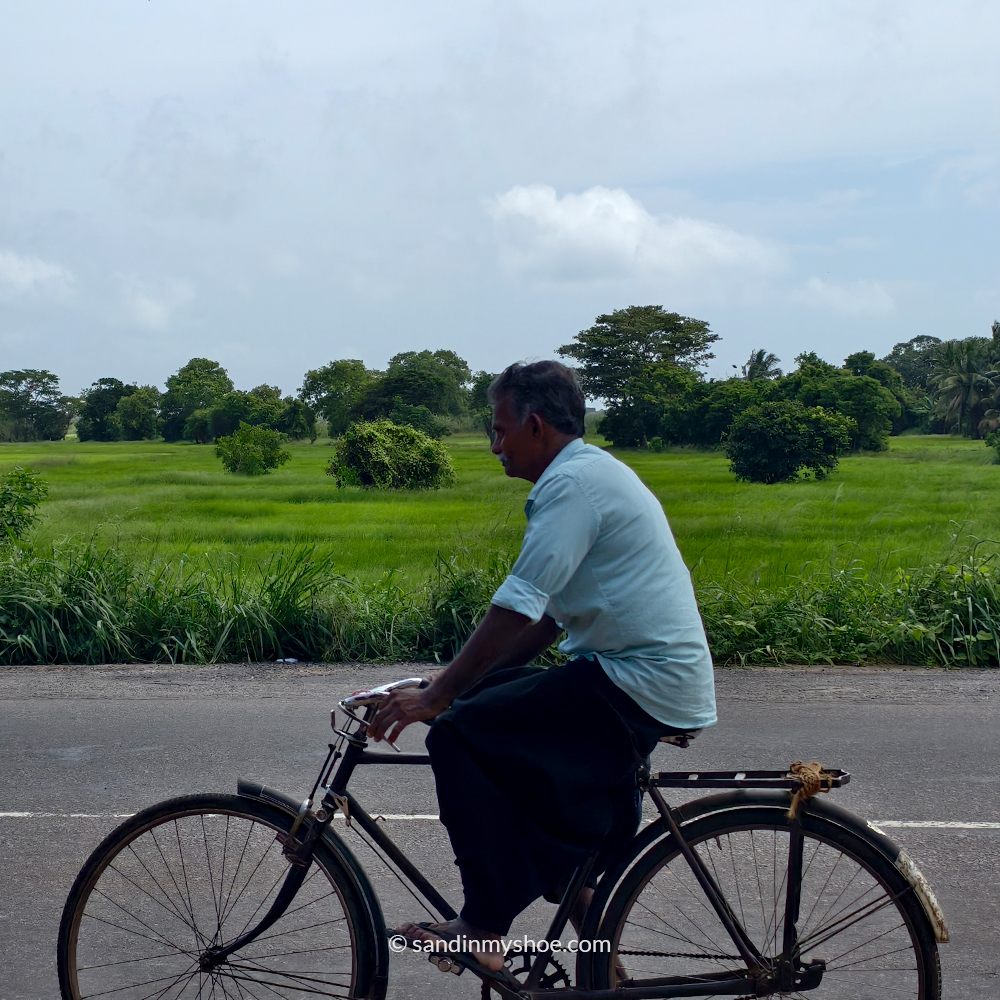
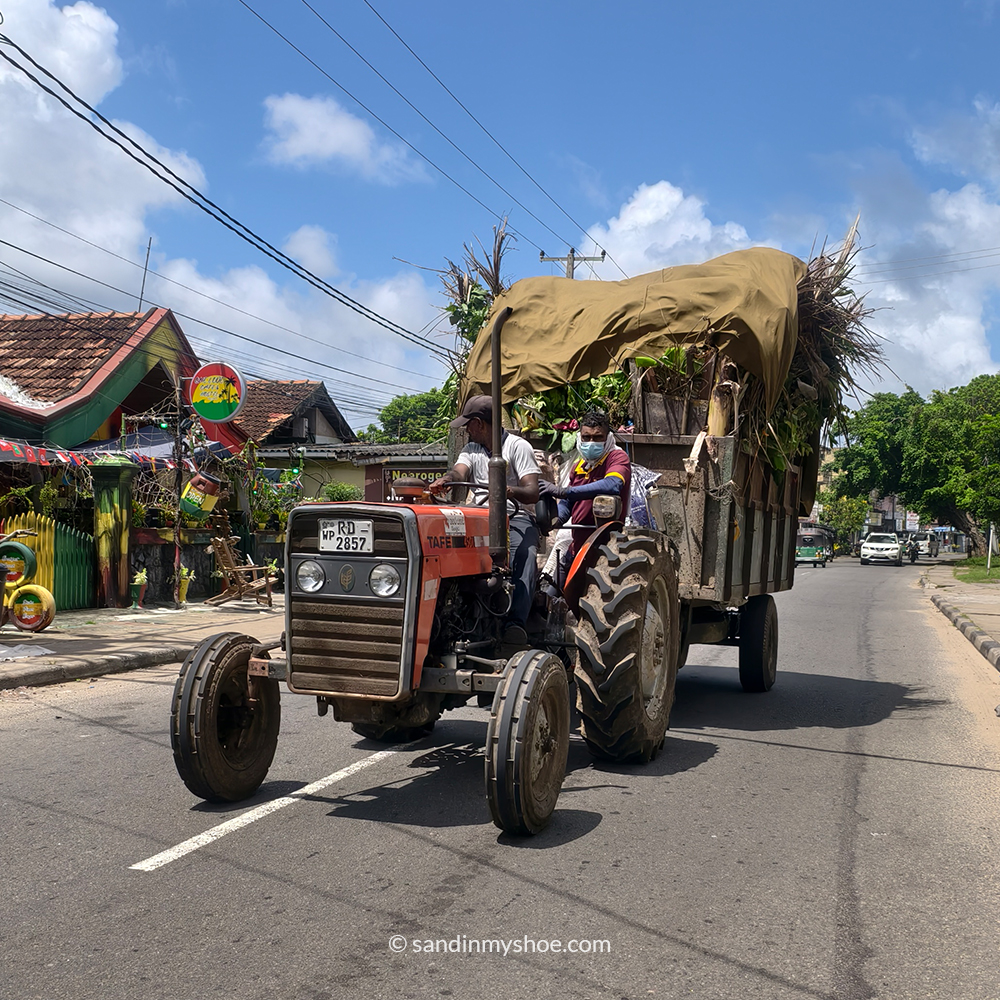

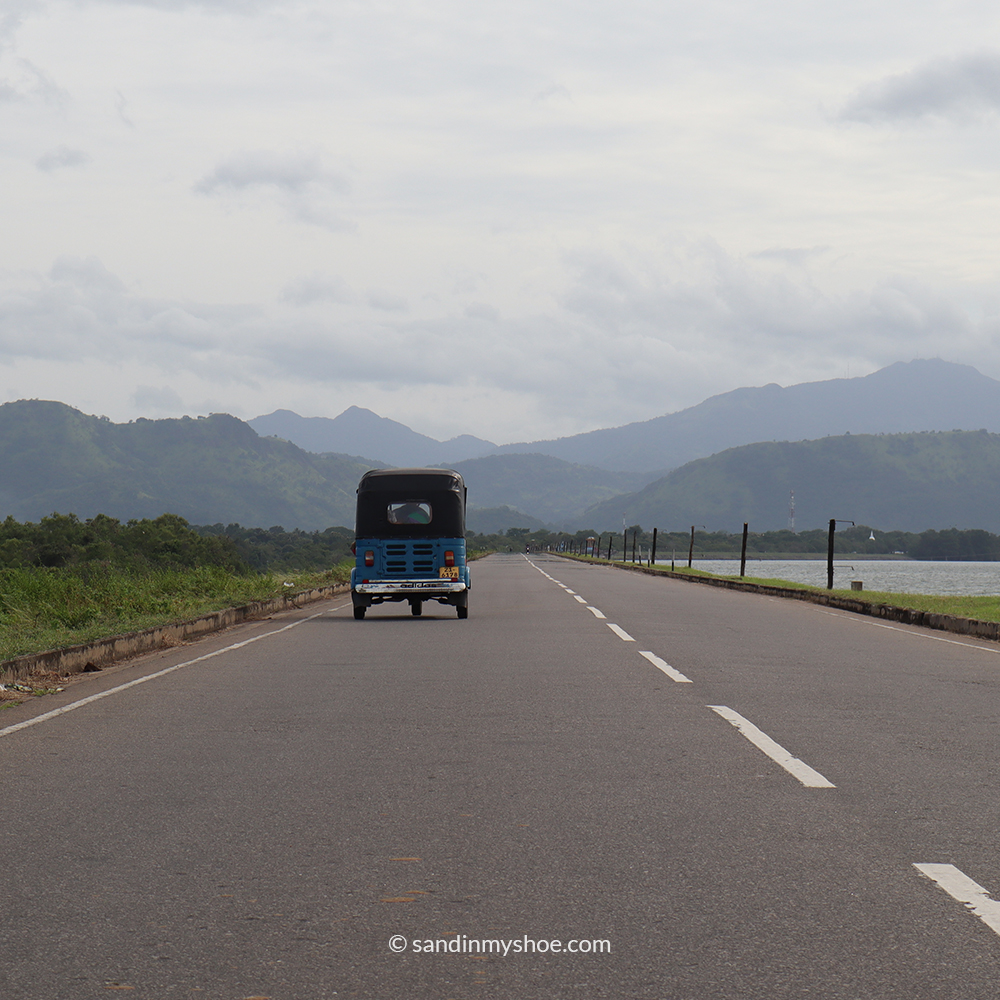
1-Week Sri Lanka Tuk Tuk Routes (All Year / South Coast)
Driving a tuk-tuk takes time, so it’s smart to focus on key areas rather than trying to cover too much ground. Here are two route options depending on your travel style:
All Year around: Nature, Animals & Culture
- Day 1: Negombo – Arrival and tuk-tuk pickup
- Day 2–3: Wilpattu National Park – Safari and wildlife
- Day 4–5: Anuradhapura – Ancient ruins and Buddhist culture
- Day 6: Sigiriya – Rock fortress and surrounding nature
- Day 7: Negombo – Return
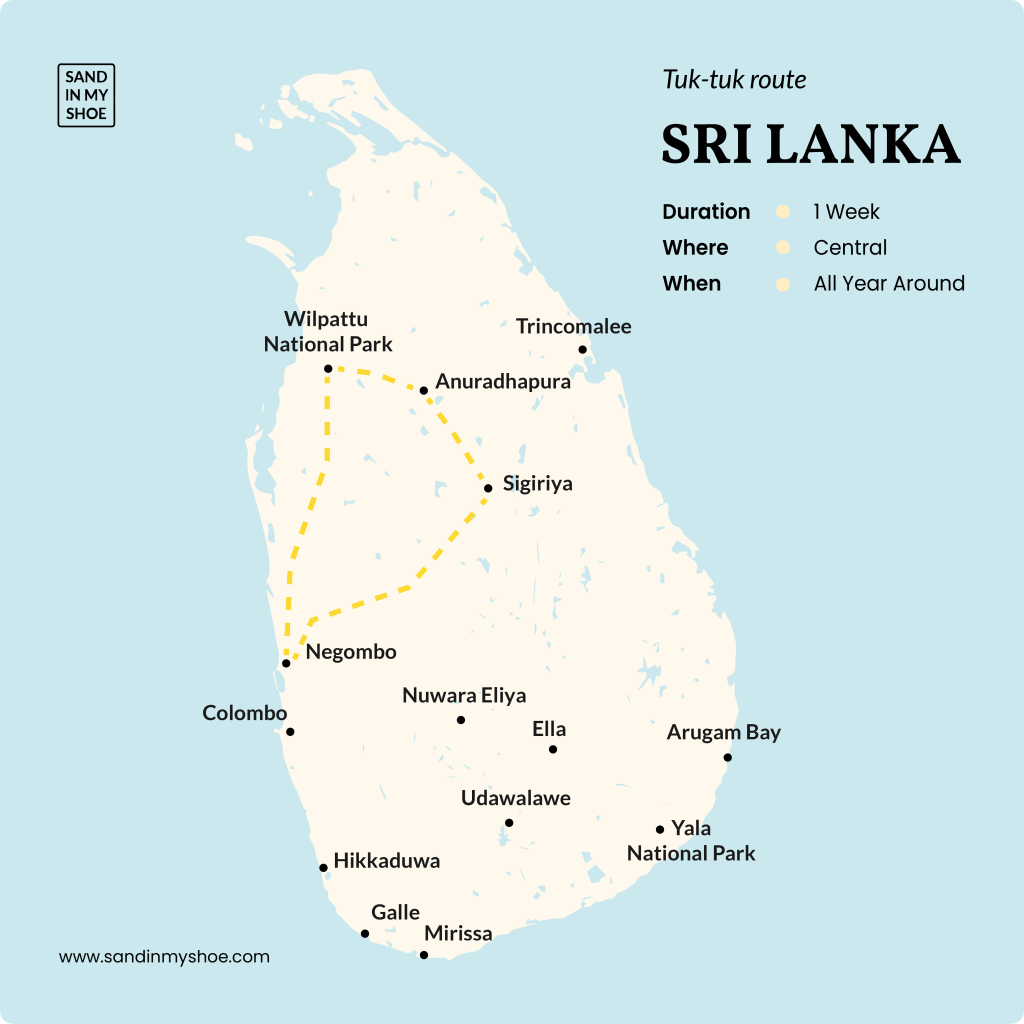
November–April: Beach, Surf & Party
- Day 1: Negombo
- Day 2–3: Hikkaduwa – Surf, nightlife
- Day 4–5: Galle – Colonial architecture
- Day 6: Mirissa – Beach life, whale watching
- Day 7: Negombo – Return
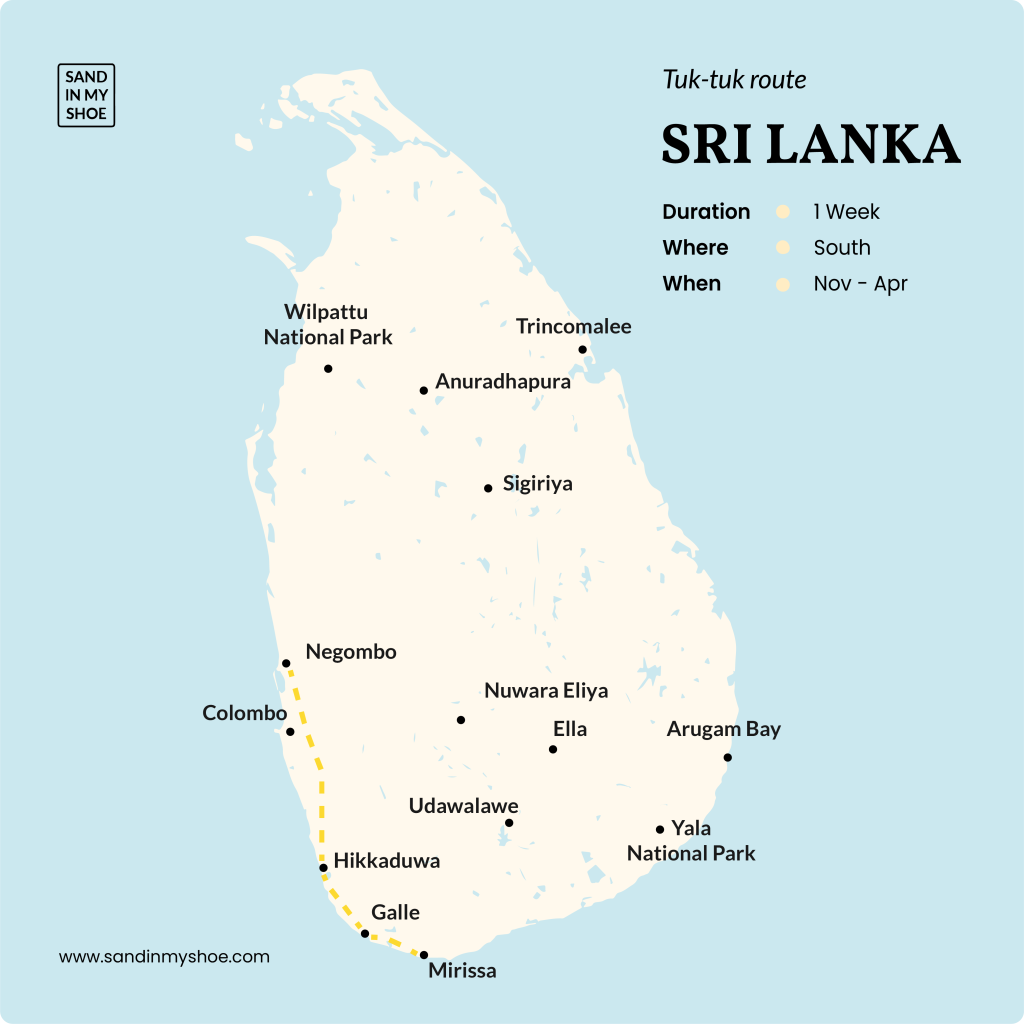
2-Week Sri Lanka Tuk Tuk Routes (Feb–Aug & Nov–Apr)
Two weeks gives you time to mix culture, nature, and beach life without rushing. These routes take you through ancient cities, hill country, and either the sunny east or south coast — depending on the season.
February–August: Nature + Culture + East Coast Beaches
- Day 1: Negombo
- Day 2–3: Wilpattu National Park
- Day 4–5: Anuradhapura
Route A: Arugam Bay (Surf & Chill)
- Day 6: Sigiriya – Rock fortress
- Day 7: Nuwara Eliya → Ella – Scenic train ride
[Tuk-tuk logistics] - Days 8–13: Arugam Bay – Surf, yoga & beach cafés
- Day 13–14: Negombo and surroundings / buffer days
Route B: Trincomalee (Whales & Beaches)
- Days 6–10: Trincomalee – Whale watching & snorkeling
- Day 11: Sigiriya – Optional hike
- Day 12: Nuwara Eliya → Ella – Train ride
[Tuk-tuk logistics] - Days 13–14: Negombo – Wind-down & return
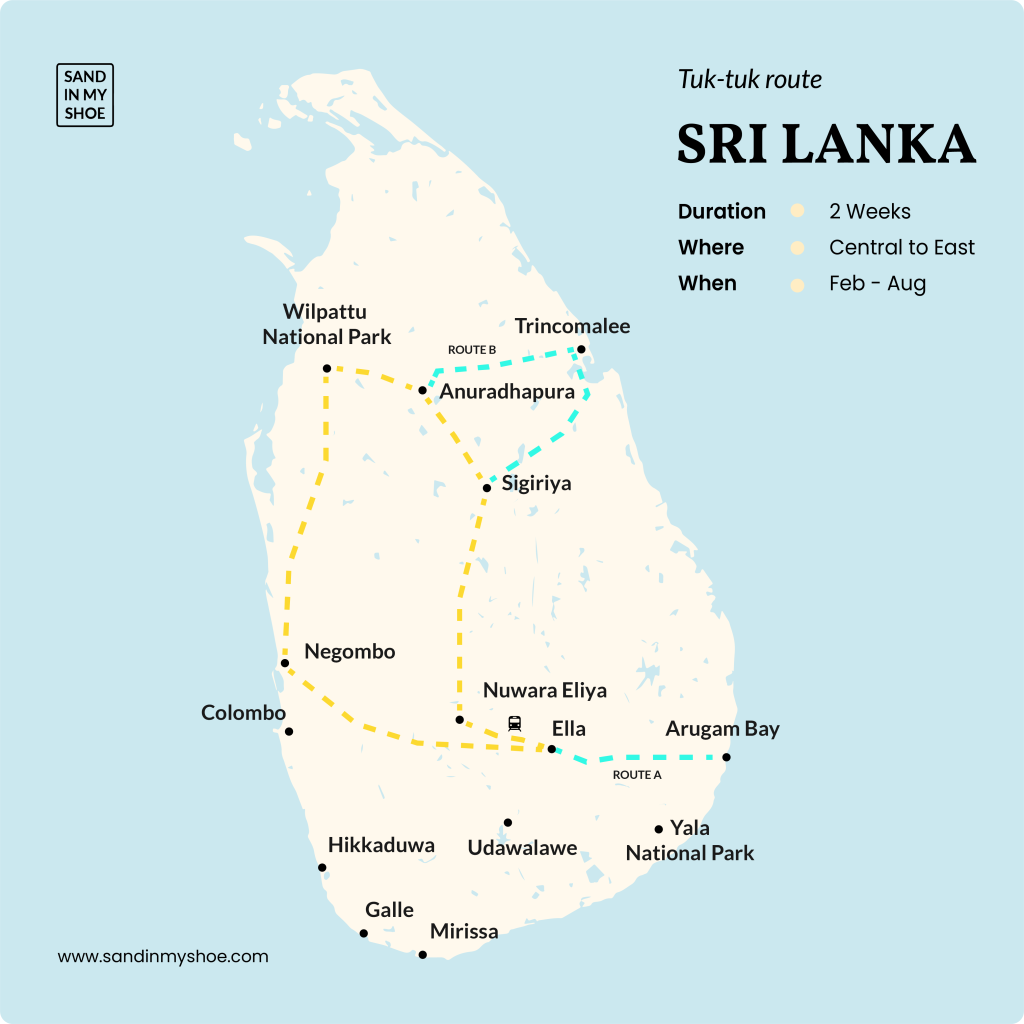
November–April: Culture + Hill Country + South Coast
- Day 1: Negombo
- Day 2–3: Wilpattu National Park
- Day 3–4: Anuradhapura
- Day 4–5: Sigiriya
- Day 6: Nuwara Eliya → Ella (train ride)
[Tuk-tuk logistics] - Day 7–13: South Coast (Mirissa, Galle, Hikkaduwa)
- Day 14: Return to Negombo
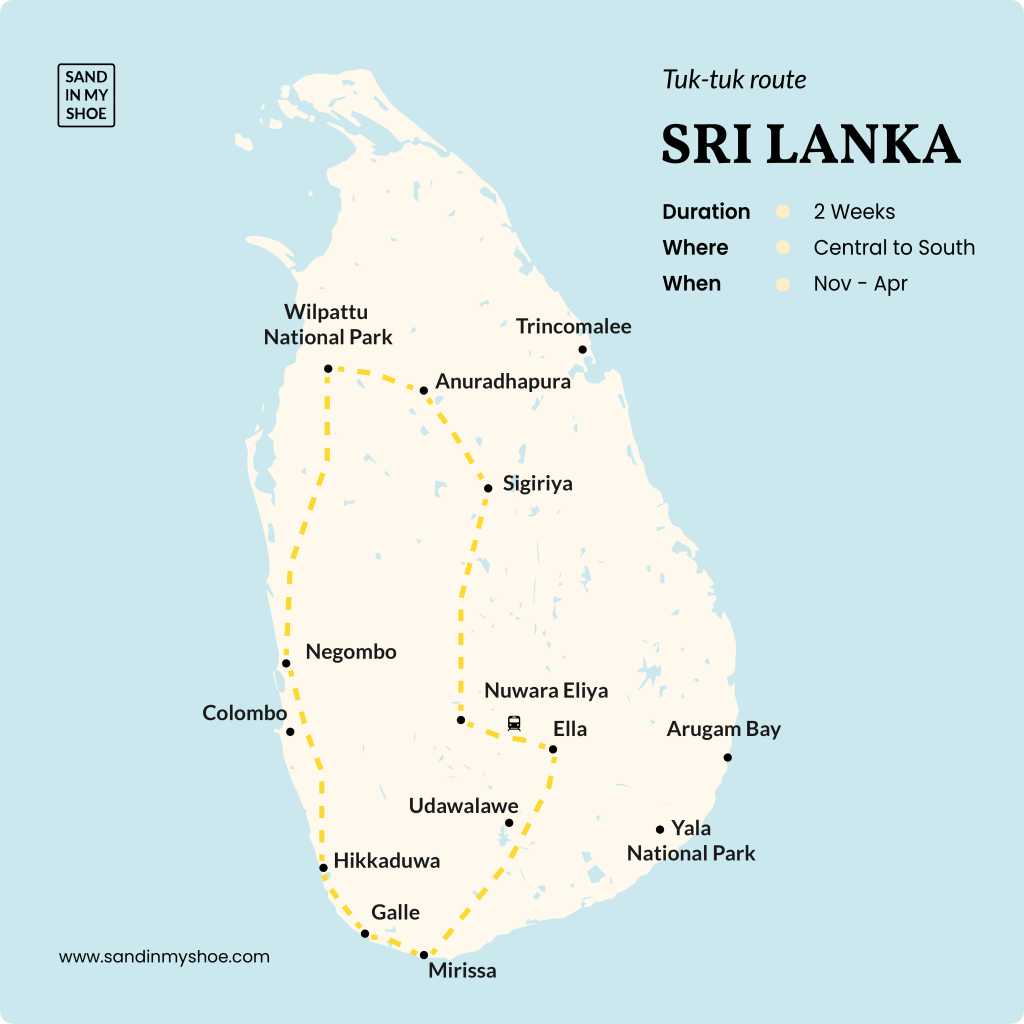
3-Week Sri Lanka Tuk Tuk Route (Full Island Loop)
Three weeks lets you do a full island loop at a relaxed pace. Explore ruins, mountains, surf towns, and national parks — with time for detours and days off by the beach.
February–August: Full Circle with East Coast & Wildlife
- Day 1: Negombo
- Day 2–3: Wilpattu National Park
- Day 4–5: Anuradhapura
- Day 6: Sigiriya
- Day 7: Nuwara Eliya (Train ride to Ella)
[Tuk-tuk logistics] - Day 8: Ella
- Day 9–11: Arugam Bay
- Day 12–14: Udawalawe – Elephant sanctuary
- Day 15–21: Return to Negombo with flexible stops along the way
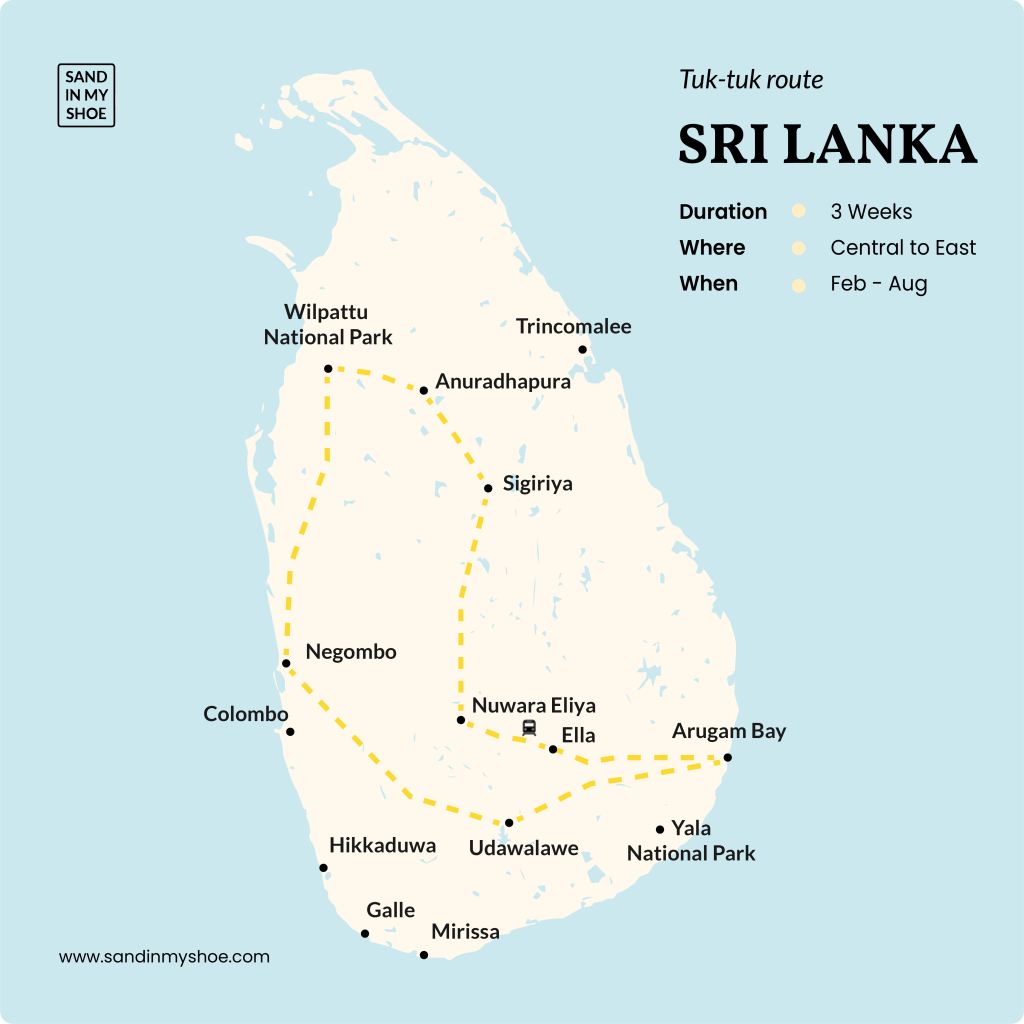
November–April: Scenic Hill Country + South Coast
- Day 1: Negombo
- Day 2–3: Wilpattu National Park
- Day 4: Anuradhapura
- Day 5: Sigiriya
- Day 6: Nuwara Eliya
- Day 7: Ella
- Day 8–10: Udawalawe
- Day 11–20: South Coast (Mirissa, Galle, Hikkaduwa)
- Day 21: Return to Negombo
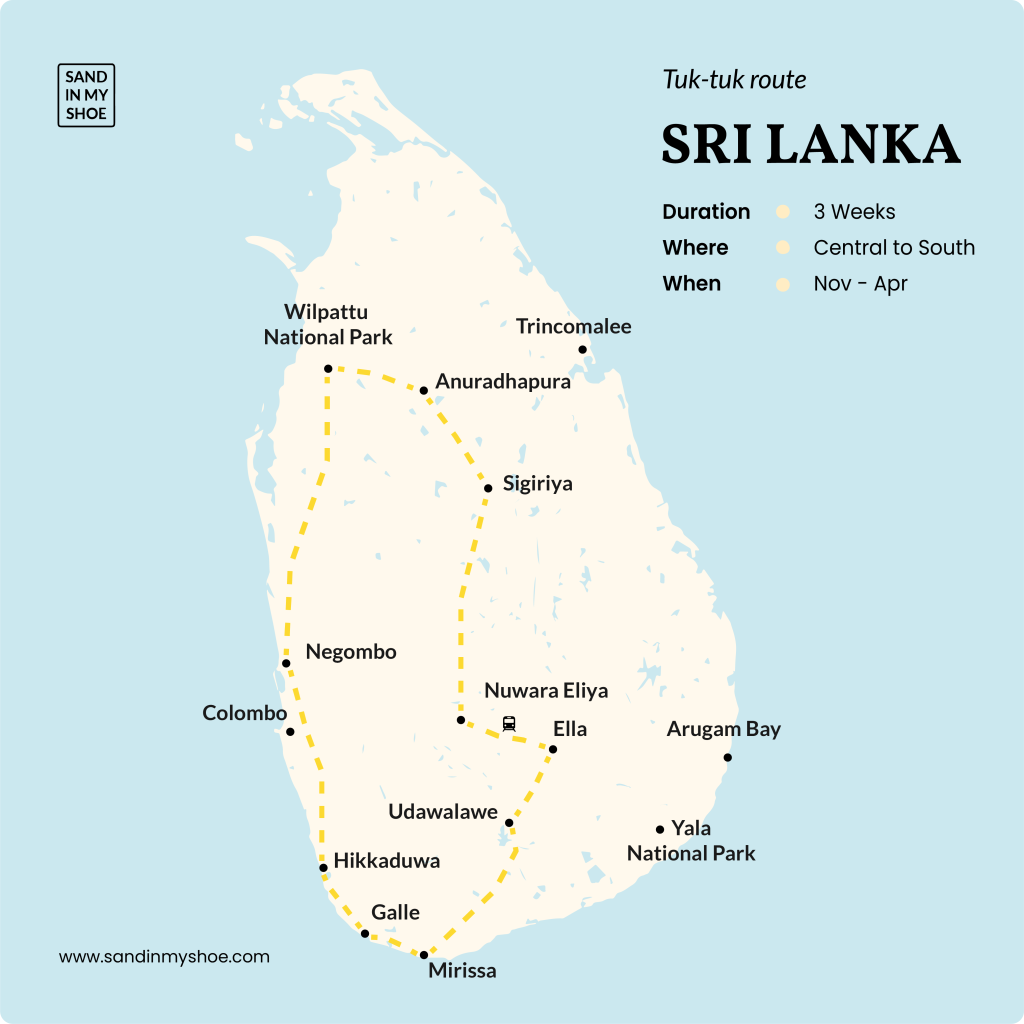
How to Take the Train from Nuwara Eliya to Ella with a Tuk Tuk
The stretch between Nuwara Eliya (Nanu Oya station) and Ella is one of the true highlights of Sri Lanka. You’ll glide past lush tea plantations, misty mountain slopes, and ride an old, slow train where the doors stay open the whole time—perfect for those iconic, wind-in-your-hair photos or wind-on-your-scalp photos (as it was for me).
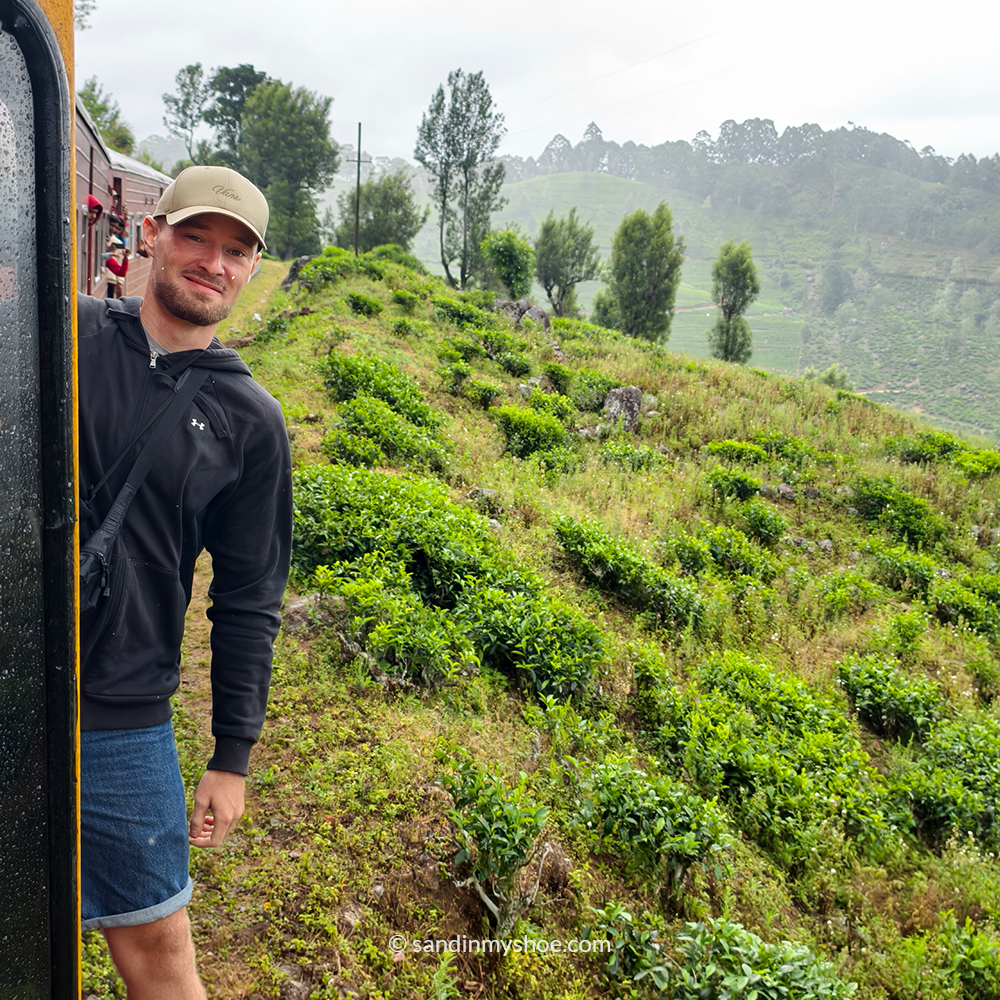
Why specifically Nuwara Eliya to Ella?
The best part of the famous Kandy–Ella route is specifically between Nuwara Eliya and Ella. It’s higher in the mountains and more scenic. There’s really no need to take the full journey from Kandy.
What to Do With Your Tuk-Tuk?
One challenge with this scenic train stretch is how to manage your tuk-tuk while you’re on the train:
Option 1: Let Your Rental Company Handle It
Many rental agencies offer a tuk-tuk transfer service, where they drive your tuk-tuk from Nuwara Eliya to Ella while you enjoy the train ride.
- Cost: Around $25–35 USD
- Convenience: You hop off the train in Ella and your tuk-tuk is waiting for you
- Time saved: Several hours
Option 2: DIY (What I Did)
I went the budget route:
- Took the train from Nuwara Eliya to Ella
- Took a local bus back to Nuwara Eliya
- Picked up my tuk-tuk
- Drove it back to Ella
Total time: 12 hours
Worth it? Sure—for the experience.
Would I do it again? Probably not—it’s a long day.
If you’re short on time or just want a smoother experience, pay for the transfer. That way, you get the best of both worlds: a scenic train ride and your tuk-tuk ready to go when you arrive in Ella.
Sri Lanka Tuk Tuk FAQ
Got Questions? Here’s What to Know
Yes — but you need a valid international driving permit (IDP) and a local tuk tuk license issued by the Automobile Association of Ceylon (AAC). Most rental companies can help arrange this for you.
No prior tuk tuk experience is required. If you’ve driven a scooter or motorbike before, you’ll adapt quickly. Just take it slow at first and be cautious of the tuk tuk’s width.
If you’re traveling February–August, explore the east coast:
Negombo → Wilpattu → Anuradhapura → Sigiriya → Ella → Arugam Bay or Trincomalee → Negombo.
From November–April, focus on the south coast:
Negombo → Anuradhapura → Sigiriya → Ella → Mirissa → Galle → Hikkaduwa → Negombo.
By law, tuk tuks are limited to 40 km/h. That may sound slow, but on winding roads and with local traffic, it’s the right pace. Plan for 2–3 hours of driving per day.
Expect to pay between $10–20 USD per day, depending on the company and season. Always check what’s included—like insurance and unlimited kilometers.
Negombo is the best place to start. It’s close to the airport, calmer than Colombo, and full of reputable rental companies with tuk-tuks set up for tourists.
Yes! Many travelers do full-island loops. Just allow 2–3 weeks and plan according to the weather. Long-distance driving is slow but scenic and rewarding.
Rain jacket (for surprise downpours)
Warm layer (especially for mountain areas)
Dry bag or plastic covers (for electronics)
Light luggage – space is limited!
Head to the south coast: Weligama, Mirissa, Hikkaduwa, and Hiriketiya offer the best surf conditions during this time, with clean waves and calmer seas.
The east coast is best during these months — especially Arugam Bay, Trincomalee, and Batticaloa. The dry season brings consistent waves and sunny weather, making it ideal for a tuk tuk surf trip.
Final Thoughts: Your Sri Lanka Tuk Tuk Adventure
Driving a tuk tuk across Sri Lanka isn’t just a way to get around — it’s a travel experience all on its own. Whether you’re winding through tea hills, dodging cows on the road, or cruising to the coast for some world-class surf, it’s a raw, exciting, and unforgettable way to explore the island.
If you’re planning your route, start by asking: What season am I going? That alone can shape your entire journey — east coast for summer surf, south coast for winter sun, and inland for year-round culture and landscapes.
So plan a route, pack light (ideally no more than 20 kg), and get ready to slow down and enjoy the ride — your Sri Lanka tuk tuk journey is going to be one for the books.


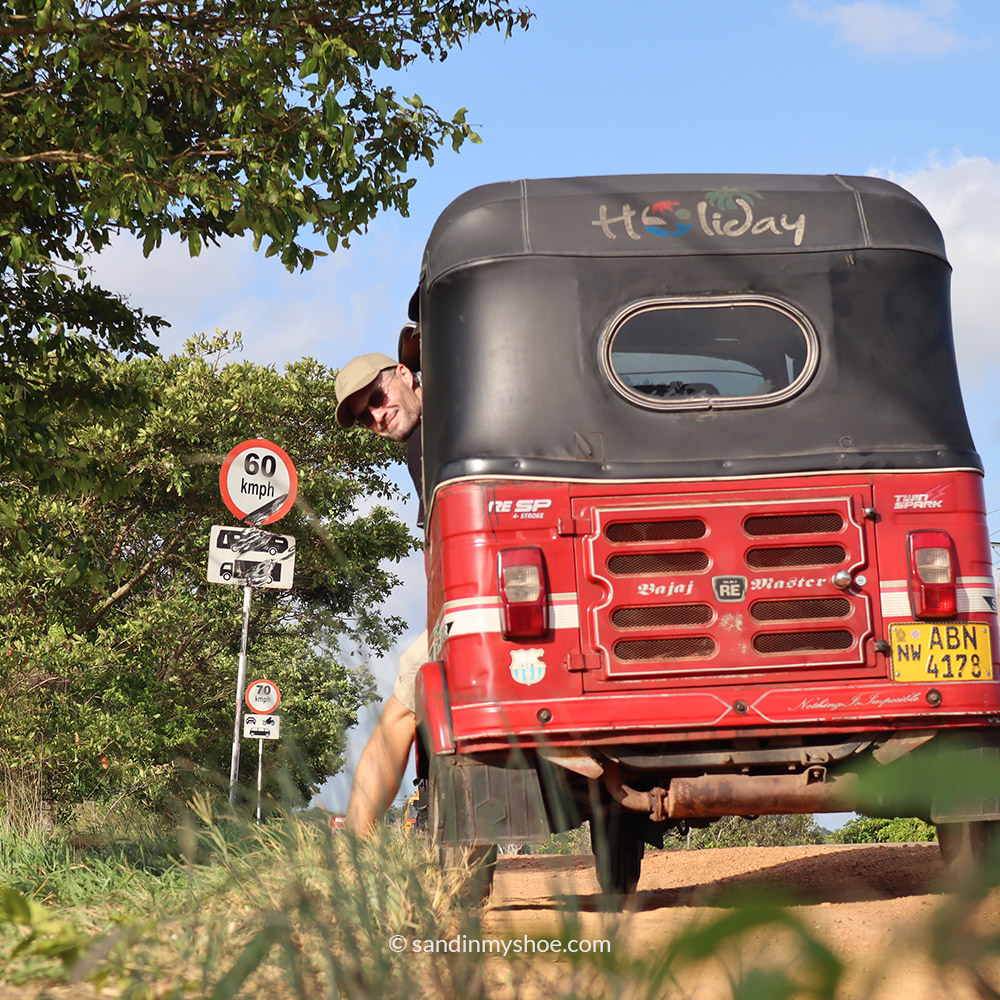





No comments yet, be the first one!
I appreciate hearing from you. If you have any suggestions, questions, or feedback, please leave a comment below. Your input helps ensure the information stays relevant and up to date for everyone.
Thank you for sharing your thoughts!